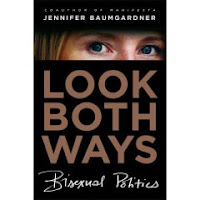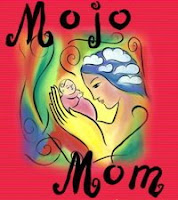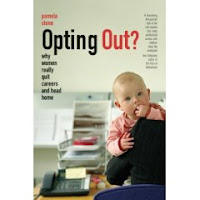Just a quick announcement that in time for Father’s Day, my partner, Marco, and my colleague and friend, author Paul Raeburn, will be appearing here soon with thoughts on boyhood and fatherhood respectively. Stay tuned!
But first, a big slurpy THANKS to all you who took the quiz below and sent me feedback (and especially to Marc, who saved me on that tenure bit, and to Dara, always). I truly appreciate it.
Ok, so my generational stripes are coming out, but can I just say how excited I am that Bust reviewed my book! I was hooked when they launched and became one of their early subscribers. It’s been fascinating–and fun–to watch them evolve.
So here’s what the Busties say in their next issue (June/July):
“Betty Friedan versus Gloria Steinem, radical feminists against cultural feminists, even Ms. contra Bust–[Sisterhood, Interrupted] is a history of battles within and between the second and third waves of feminism. Siegel surveys many instances of ‘feminist infighting’ over the last 30-odd years–wherein much energy has been spent debating how to achieve feminist goals as opposed to actively fomenting change–and explores the disconnect between older and younger feminists….The book’s singular focus on feuds presents an opportunity to revisit these happenings within the context of the movement–to see how the bickering often stalled forward progression and to learn from that.” – Bust Magazine
Ok, they said some other things too. But I swear, in light of that nice little piece by Henry Alford about mis-blurbing that appeared at the back of the New York Times Book Review the other week, I promise that what I’ve extracted here is verbatim and nondoctored. No really, I swear!
Think You Know About Feminism in 2007? Test Your IQ
1. Betty Friedan was:
A. A pin-up model from the 1940s
B. The mother of American cookbooks
C. A columnist for McCall’s
D. The founder of the National Organization for Women
E. Author of The Feminine Mystique
2. In 2007, for every dollar a man earns, a woman earns:
A. the same
B. 84 cents
C. 77 cents
D. 56 cents
3. During the Miss America Protest of 1968, radical feminists did all but which of the following:
A. Crowned a live sheep “Miss Americaâ€
B. Burned their bras
C. Threw aprons and high heels into a Freedom Trashcan
D. Sprayed Toni home permanent spray inside the convention hall
4. In 2007, women make up what percent of the U.S. Senate?
A. 3%
B. 16%
C. 33%
D. 50%
5. “Postfeminist†is:
A. A term coined in 1919 by a group of literary radicals in Greenwich Village who rejected the feminism of their mothers one year before women won the right to vote
B. A term used in the 1980s to describe an era in which feminism was deemed unhip and unnecessary
C. A media-hyped label that irritates third-wave feminists more than Adam Corolla
D. All of the above
6. The Real Hot 100 is:
A. A new reality tv show
B. A list of the hottest women according to Maxim magazine
C. A campaign to redefine hotness by refiguring the standards to honor guts and not just glam
D. Hot sauce
7. The Equal Rights Amendment was introduced in:
A. 1923
B. 1942
C. 1969
D. 1971
8. In 2007, what percent of tenured professors at PhD-granting universities are women?
A. 7%
B. 16%
C. 20%
D. 50%
9. Title IX is:
A. The name of Britney’s favorite club in NYC
B. A piece of pro-woman legislation passed in 1972 now under attack
C. The name of a secret feminist cult
D. The sister band of L7
10. In 2007, what percent of Fortune 500 CEOs are women?
A. 2.6%
B. 15%
C. 26%
D. 50%
11. BUST is:
A. A girlie magazine for men
B. A grrly magazine “for women with something to get off their chestâ€
C. A boxing move popularized by Laila Ali
D. A West Coast rapper
ANSWERS:
1 – C, D, and E, 2 – C, 3 – B, 4 – B, 5 – D, 6 – C, 7 – A, 8 – C, 9 – B, 10 – A, 11 – B
SCORE YOURSELF
11-8 = Superstar!
7-4 = Semi-superstar
3-0 = Hit the books, my friend. You got catching up to do.
Based on Sisterhood, Interrupted: From Radical Women to Grrls Gone Wild (available from Palgrave, June 12, 2007)
Last week a reporter called me to talk about why Hillary is such a polarizing figure, especially among women. And now, turns out, Katie Couric is too – or at least, among viewers male and female, according to a New York Times article today:
[A] recent Gallup poll reinforced the notion that Ms. Couric had become a polarizing figure: 29 percent of respondents said that they did not like her, as opposed to 51 percent who said that they liked her. (Her competitors at ABC and NBC both had negative scores under 20 percent and positives around 60.)
Not surprising of course that Couric has endured exceptional personal scrutiny:
She was criticized for wearing too much makeup or too little….She was criticized for being too soft in her initial newscasts, and too hard in an interview with the presidential candidate John Edwards and his wife, Elizabeth, after they revealed that Mrs. Edwards’s cancer had returned.
So here comes CBS president Sean McManus, weighing in:
“Maybe we underestimate the huge shift this represented,†Mr. McManus said. “It was almost a watershed event to have a woman in that chair.†He added, “There is a percentage of people out there that probably prefers not to get their news from a woman.â€
Watershed indeed. And maybe if there were MORE women delivering hard news across the networks and on the air, Katie wouldn’t have to represent everything to everyone. Kind of like Hillary, you might say.
PS. On a generational sidenote, Couric’s ratings, while still usually third after ABC and NBC, are most competitive among younger women. Guess we’re ready to get our news from a girl.
According to my lame but stalwart built-in thesaurus, OPT (v) means “to choose something or choose to do something, usually in preference to other available alternatives.” Pamela Stone’s Opting Out? Why Women Really Quite Careers and Head Home is the book I’ve been waiting for.
Instead of focusing reductively on women’s “choices” (who has choices when alternatives are limited?), Stone charts the institutional obstacles and cultural pressures that leave even the most advantaged women feeling pushed out. Stone writes as a sociologist, a scholar of women’s careers, and a mother. But here’s why I love this book: Instead of blaming women, imploring us to “get back to work” (a la Linda Hirschman) or warning us (Leslie Bennetts-style) that we’re all making a dastardly mistake, her message is one that, as a Gen Xer staring into the crosshairs of burgeoning career and potential motherhood, is far more palatable to hear.
Stone lets her subjects — mothers in their 30s and 40s who “time out” from professional careers — describe their trajectories in unstructured interviews, giving voice to a group we have heard much about but have not heard. She lambasts the media for sensationalizing our so-called mass exodus — which, in truth, is not so massive and reflects neither a sea-change in values among feminism’s daughters nor the modernization of the feminine mystique.
Opting Out? fills a void — virtually no real research has been done before on women leaving careers — and it’s the question mark in the title that propels the book. Stone looks at who these women are who leave and head home (whether permanently or temporarily), why they walk away from years of training and accomplishment to take on “full-time” motherhood, and what happens after they do. She looks at the implications of their leaving for the workplaces they leave behind, and the impact their decisions have on other women — female coworkers and, especially, younger women embarking on careers. Loaded with facts and real data, the introduction alone is worth the price of the book.
Stone found that the women she interviewed quit as a last resort, and for reasons of work, not family. She calls their decision is “a kind of silent strike” and describes their failed efforts to re-invent the workplace in their image: “These women had alternative visions of how to work and be a mother, yet their attempts to maintain their careers on terms other than full-time plus were penalized, not applauded; it was quitting that earned them kudos.” Stone emphasizes that these women’s stories are not over, that most are still in the process of re-invention — but leaves us wondering, how will the next chapter unfold?
Anyone acquainted with the research knows that younger women and girls aspire to professional achievement. It’s made headline news. As a recent New York Times story and books like Courtney Martin’s Perfect Girls, Starving Daughters make perfectly clear, Millennial strivers are ambitious to the point of extremes. Daughters of a half-finished revolution, this generation (as well as my own) lives suspended between the expectation of a world ready to open its arms to us and the reality of a world not yet fully transformed. Books like Stone’s have the potential to rally without blaming, and incite without fear. Let’s hope it finds its audience — working women present and future pondering their limited options and the workplaces that, drained of such women’s talent, should have no choice but to change and offer us alternatives to heading home.


I love that, along with her own original and beautifully rendered work, Perfect Girls, Starving Daughters, author Courtney Martin is also bringing renewed visibility to a 2006 study, The Supergirl Dilemma, from Girls Inc, the organization that empowers girls to be strong, smart, and bold. Courtney even did a Q&A on the Girls Inc website.
Jenn Pozner on WIMNs Voices Blog links to Courtney’s appearances on The Today Show, MSNBC, and Fox News and in Newsweek and Glamour. And check out in particular this piece by Lakshmi Chaudry in The Nation. Now how’s that for strong, smart, and bold.
(Women’s research/org strategy ALERT: Want mainstream coverage? Cultivate relationships with sensitive, brilliant popular writers like Courtney who get it. Run! Don’t walk!)
O.M.G. Check this out from Inside Higher Education, a nifty little update that comes to my Inbox but rarely gets read. (Guess I’ll start reading it more.)
With no advance warning and no calls to her, Hillary Anger Elfenbein, an assistant professor of organizational behavior and industrial relations at UC-Berkeley’s business school, found her research being discussed on the House floor last week. Republican lawmakers wanted to bar the National Science Foundation from continuing a grant to support it. Why? They thought its title was, well, silly. Here’s the scoop:
Rep. John Campbell, a California Republican, cited the budget deficit in going after the social science research, including Elfenbein’s work as well as studies on bison hunting and on sexual politics in Dakar.
“I am sure that some believe that these are very fine academic studies. That’s excellent. Within the realms of academic halls, they may think a number of things are fine academic studies. That’s not the question,†Campbell said on the House floor. “The question before us is, do these things rise to the standard of requiring expenditures of taxpayer funds in a time of deficits, proposed tax increases and raiding Social Security funds?â€
Nu? So what is this silly and questionable research project, you ask? It’s an investigation of “Accuracy in the Cross-Cultural Understanding of Others’ Emotions.†And here’s the best part: Elfenbein’s research had recently been praised by Army officials as potentially providing insights that would be useful to U.S. soldiers in Iraq. Not only that, this kind of research can benefit American businesses.
But wait! Former psych professor-turned-representative to the rescue:
Leading the opposition to Campbell was Rep. Brian Baird, a Washington State Democrat who formerly was a psychology professor at Pacific Lutheran University. He stressed the role of peer review and the necessity of actually knowing about the research grants being discussed.
Um, yes.

I’m finally catching up with the books on my Feminist Reading Shelf and wanted to belatedly comment on Jennifer Baumgardner’s very thoughtful Look Both Ways.
Part personal, part political, and always poignant, Jennifer writes about coming into her own bisexuality when (oops!) she unexpectedly falls in love with a fellow intern at Ms. shortly after college. With her usual intergenerational flair and contextual savvy, she includes a chapter on “The Woman-Identified Woman” – icon and theory of “second-wave” feminism – and puts her “third-wave” embrace of a more fluid sexuality in the context of feminism’s evolution. It’s interesting to juxtapose this far more nuanced account of girl-on-girl dynamics with the current conversation about GGW (Girls Gone Wild, for those not yet in the know), where girls get it on for the boys. The book goes way beyond the superficiality of the Madonna-Britney kiss (Madonna: what were you thinking?!), past the reductive stereotype of third-wave sexuality (my lipstick is political), and boldly explores the non-PC world of desire in an era of sexual complexity. If you haven’t already, I urge folks to get past the annoyingly snarky review that appeared a while ago in the Times and give Both Ways a fresh look. Go. Go now. Read this book. Well worth the journey. It changed the way I think about bisexuality and Jennifer is a gorgeous writer. (She’s gorgeous, too, but that’s not why you should read the book! Though I must say, those eyes on the cover certainly draw you in.)
(For less battle-axe coverage, see the interview on Feministing.com, a bit in Mother Jones, and a more mixed review in Salon.)

On Saturday, May 12, The Today Show will air a discussion about “Women Who Opt Out” of the workforce and what happens next with MojoMom, Leslie Bennetts, Lisa Belkin, Linda Hirshman, and Gail Saltz. Mojo will be the youngest of the bunch (Gen X), and adds a fresh perspective to the debate. Promises to provide good fodder for some much-needed intergenerational conversation and, perhaps, I hope, myth-busting…Stay tuned.
I had a blast at the Council on Contemporary Families conference this past weekend. Many of the members of that group — now celebrating its 10th year – are personal heroes. True models of engaged scholarship. And incredibly nice people to boot. Kudos to Stephanie Coontz, Steve Mintz, Josh Coleman, Waldo Johnson, Virginia Rutter, Ashton Applewhite, Barbara Risman, Phil and Carolyn Cowan, and others for making it all come true. (Coverage of the conference – well, sort of – here: in The Washington Times.)
At the conference, CCF released a great new “product”, called “Unconventional Wisdom: New Data, Trends, and Clinical Observations about American Families”. Look past the lengthy title and delve into over 75 well-delivered, highly relevant findings that provide a snapshot of what some of the nation’s leading authorities are thinking about how marriages, families, parenting, and intimate relationships succeed or fail. To wit:
AND BABY MAKES THREE
In a study of 130 couples from wedding until their first babies were three years old, John and Julie Gottman found that 67% of couples had a big drop in relationship happiness and a big increase in hostility in the first 3 years of the baby’s life. In addition, the parents’ hostility during pregnancy was associated with baby’s responsiveness at three months. Based on this, they designed and tested an intervention to help new parents: the workshop reversed the drop in couple happiness and the increasing hostility. They also found a reduction in postpartum depression. At three years old, the babies whose parents had been to a workshop were more advanced in terms of emotional and language development. Part of this was due to father’s involvement: the workshops improved father’s involvement.
John Gottman and Julie Gottman, Co-Directors, The Gottman Institute (Seattle, WA). Contact: johng@gottman.com
WHEN COUPLES DISSOLVE: HOW THEY FARE
What happens when couples dissolve their relationship? Both men and women experience income losses, but women experience a sharper drop. Married men whose relationships dissolve see an average decline of 22.3 percent in their household incomes, while married women see an average decline of 58.3 percent. The income loss for men and women in cohabiting relationships is less — 10 percent for men and 33.1 percent for women. But because cohabitors have lower incomes in the first place, their income losses are especially likely to leave them in precarious economic circumstances. Only 9 percent of formerly married men are poor after dissolution, while nearly 20% of cohabiting men are living in poverty after their break-ups. And most vulnerable of all are cohabiting African-American and Hispanic women whose relationships dissolve.
Pamela J. Smock, Associate Vice President for Research – Social Sciences & Humanities, Professor of Sociology & Women’s Studies, and Research Professor, Institute for Social Research, University of Michigan. pjsmock@umich.edu; Phone: 734.763.2264
GOOD REASONS FOR MEN TO DO HOUSEWORK: HAPPIER MARRIAGES, BETTER KIDS
Numerous studies reveal the benefits to a relationship and family when a father participates in housework. Women are more prone to depression and to fantasize about divorce when they do a disproportionate share of the housework. Wives are more sexually interested in husbands who do more housework. And children appear to be better socially adjusted when they regularly participate in doing chores with Dad. In my clinical experience, men do more in homes when they have stronger egalitarian attitudes, and when their wives are willing to negotiate standards, act assertively, prioritize the marital friendship, and avoid gatekeeping.
Joshua Coleman, Author, Psychologist, Training Faculty San Francisco Psychotherapy Research Group. www.drjoshuacoleman.com; 510-547-6500
DO MOTHERS STAY HOME WHEN THEIR HUSBANDS EARN GOOD MONEY?
People often think that women whose husbands make “good money†stay home when they have children. But it takes being married to men in the top 5th percentile (men earning more than $120,000 a year) to seriously reduce women’s employment — only 54 percent of mothers with husbands with these top earnings worked for pay. Among married women whose husbands were in the top 25 to 5 percent of all earners (making salaries ranging from about $60,000 to $120,000), 72 percent of mothers worked outside the home, almost identical to the 71 percent work participation figures among married moms whose husbands’ earnings were in the lowest 25 percent of men’s wages. Women’s own education has a much bigger effect on her likelihood of working than her husband’s earnings; highly-educated women who can earn a lot typically don’t become stay-at-home mothers.
Paula England, Professor of Sociology, StanfordUniversity. 650-723-4912; pengland@stanford.edu
RAUNCH CULTURE ENTERS THE THERAPY OFFICE
Since 2000, my clinical practice has seen a dramatic rise in the number of girls and young women (aged 13 to 21) who’ve found themselves in the midst of some kind of overwhelming sexual experience, usually involving some kind of exhibitionism or trading sex for favors/social standing. The transition in this country towards “porn sex” as normative sexuality is causing intense confusion among many middle-and high-school girls about whether sexiness and sexual pleasure have anything to do with each other, or with the notion of personal choice.
Michael Simon, MFT, Director of Counseling & Student Support, BentleySchool, Lafayette, California. 510-433-295; Michael@PracticalHelpForParents.com
DOES DIVORCE MAKE YOU HAPPY?
Our research shows that it can make you less depressed—if you are in a distressed marriage. When we compare men and women in distressed marriages with men and women who have divorced and left their distressed marriages, it turns out that the people who stay are more likely to be depressed than those who leave in the short run. Over time, some of the relief from divorcing from a distressed marriage wears off, perhaps due to the challenges of being single and taking care of a family. Still, even after the passage of time, people who leave are a little less likely to be depressed than people who stay in a distressed marriage.
Virginia Rutter, Assistant Professor of Sociology, Framingham State College.
vrutter@gmail.com; 508-626-4863
And, of course,
THE ONLY CHILD DISCONNECT
Single-child families are the fastest-growing families in this country and in most industrialized Western European countries as well. Over the past 20 years, the percentage of women nationwide who have one child has more than doubled, from 10% to 23%. In 2003, single-child families in the U.S. outnumbered two-child families – 20% vs. 18%.
Still, according to a 2004 Gallup poll, only 3% of Americans think a single-child family is the ideal family size. There’s a real disconnect between the perception of the ideal and the reality of what people are doing.
Deborah Siegel, Ph.D., Author / Consultant, Fellow, Woodhull Institute.
www.deborahsiegel.net



